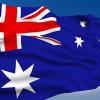Air Con control
-
Latest Postings
-
2
Camry Touring 2010 Fuel consumption 15.2L/100km. Normal?
"Fuel injector cleaner is a waste of money" Only if you by the cheap crap if you use LiquMolly a German Product it does work and you won't waste your Money.- camry
- fuel consumption
-
(and 1 more)
Tagged with:
-
0
Camry Touring 2010 A/C Issues.
Hi Guys, My Camry 2010 Touring just had a regas done on it and the next day for some reason it wasn't blowing cold air but the next day it is now working with nice cold air BUT every now and then we can hear and feel a like a buzz for a few secounds and today while my sister took my I could her like a mild knock sound when stopped but goes away when driving. Any idea what this could be and the A/C is always working now for now. -
6
-
18
High idling on the 2zzge even when warm (solved!)
i am in sydney, just got 1992 tarago, same problem, 2k idle speed when engine warm, changed the whole throttle body, ECU, still same, help pls in sydney 0405987988 -
5
High RPM Idle after the engine warm up.
i have same problem, already changed throttle body, ecm modle, help pls -
0
Tow bar
Hi guys, Just bought my new Landcruiser Prado yesterday. What is the difference between Onroad Towner and Off road Towbar -
3
Disconnecting winch, lightbar and UHF
Generally, yes. In the 60s, and earlier, there were cars with positive grounds, so I'm always a bit hesitant to say the negative wire. It is always the one that bolts to the body. Herb -
0
2011 Land Cruiser 1VD-FTV Engine Won't Start After Overhaul
Hi everyone, I have a 2011 Land Cruiser VDJ200 with a 1VD-FTV engine. I recently had the engine fully overhauled due to a blown head gasket. However, after the overhaul, the engine is not starting. It only cranks but doesn't fire. I've checked the following DTC codes: Internal memory EEPROM error Low rail pressure The actual rail pressure data shows: 240 bar during cranking 61 bar when ignition is off Based on these findings, I suspect the following potential causes: =Defective Diesel High-Pressure Pump =Leaking Piezoelectric Injectors =Diesel Fuel Bypassing to the DPF Circuit =Faulty Injector Drivers I'm hoping for some expert advice to help diagnose and resolve this problem I'm seeking expert advice on how to troubleshoot and resolve this issue. Any suggestions or guidance would be greatly appreciated. -
3
Disconnecting winch, lightbar and UHF
Okay this might be dumb but it the ground the negative? -
3
Disconnecting winch, lightbar and UHF
Disconnecting batteries, ALWAYS disconnect the ground wire first. Doing this will also disconnect power, in general. Herb
-




Recommended Posts
Create an account or sign in to comment
You need to be a member in order to leave a comment
Create an account
Sign up for a new account in our community. It's easy!
Register a new accountSign in
Already have an account? Sign in here.
Sign In Now